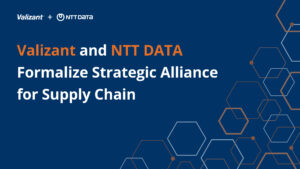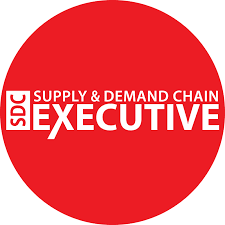The importance of aligned operational activities cannot be overstated. It is the primary factor in a company’s operational effectiveness—how well it carries out the activities required to create, produce, sell, and deliver products to its customers. While each company will have a different mix of strengths, the companies providing market-leading value—more value than that available from the competition—will survive and thrive over the long run.
Market leaders in any industry will have the highest degree of alignment across functions: product, sales, marketing, supply operations, and finance. They also are able to consistently deliver high customer value because information about unexpected events (demand spikes, capacity fluctuations, component shortages), which could compromise that value, is shared across the organization while there is still enough time for alternative solutions.
The inverse is also true: Limited cross-functional alignment is a primary driver of poor operational effectiveness. When processes for sharing information about unexpected events are limited, some functions are blindsided and have little or no ability to respond in a timely manner. The result is operational ineffectiveness, which can result in unmet demand, operational disruption, idle capacity, and excessive inventory investment—each one a direct and unfavorable impact on customer value and financial performance.
#1 – Executive Support and Participation in the S&OP Process
S&OP is successful because it aligns planning across functions to support company objectives and improve performance. Given that, it’s vital that executive leadership – from the CEO and president to managing directors, general managers and P&L owners – are involved from the start. Compromise is often required between functional areas and, at times, functional leaders may disagree on the best approach. The executive S&OP meeting provides a forum for routine decision-making where the executive leader considers team recommendations and decides the course of action.
“Only three things happen naturally in organizations: friction, confusion, and underperformance. Everything else requires leadership.” –Peter F. Drucker[GN1]
When the executive leader is not committed to this decision-making forum, functional leaders will find other ways to resolve their issues and, as Peter Drucker pointed out, the result is friction, confusion and underperformance. As a consequence, the S&OP process is undermined, participation can drop off and performance improvement stalls.
A low-risk, low-cost approach to executive leadership is through an executive S&OP pilot. To keep it simple, a pilot can be done with one or two product families. The executive leader will see firsthand how executive S&OP provides improved visibility and the opportunity to resolve issues before they impact performance.
Consider the experience at a major steel company, which initially had a skeptical CEO. The CFO used S&OP at a previous company and experienced the transformation. He became a champion for S&OP and recommended it to the CEO as a way to achieve the significant performance improvements mandated by the board of directors. The CEO agreed to a pilot and took a leadership role. Even before the pilot was completed, the CEO approved rolling out S&OP to the entire division and commented that it should have always been done that way.
The steel company’s experience is not unique. Many companies have gained executive leadership through a pilot. Start with your company’s executive champion— someone who is trusted and respected by your CEO, shares your S&OP passion, and is willing to take a stand.
#2 – Scope Out Full Cross-Functional S&OP
True S&OP alignment occurs when the activities of each functional area are focused on the company’s goals and synchronized with other functional areas. S&OP success depends on participation by all functional leaders—such as VPs of product, sales, marketing, supply operations, and finance—to provide a synchronized effort to reach the company’s goals.
Just as the competitiveness of an eight-person rowing crew would be compromised by an empty seat, the absence of any functional area from the S&OP process handicaps the ability to deliver customer value and financial performance. The consequences of an empty S&OP seat can result in poor coordination on new product introductions, unexpected sales, unexpected promotions, and material or capacity constraints. The result is mismatched product volume, mix, location or timing, all of which negatively affect the company’s performance.
Check your S&OP process. If it reveals an empty seat in a team that should include the leaders of product, sales, marketing, supply operations, and finance, at a minimum, you likely have a problem.
Resolving this issue could be as simple as requesting that the missing member is invited to join the executive S&OP meeting and that the directors join the partnership meeting (pre-S&OP). Meeting attendance is a key first step. The level of participation can increase over time. Perfection isn’t required to start and shouldn’t get in the way of progress. A busy VP or director may find it challenging to find time to participate due to their demanding schedules. In these instances, an objective and constructive analysis of how their participation may have avoided or minimized past mismatches is often helpful to establish the importance of S&OP.
When several S&OP seats are empty, a different approach may be required—one that upgrades the S&OP process and expands to full cross-functional participation. The S&OP upgrade is a low-risk, low-cost approach that can demonstrate how performance would be improved in 90 days. It is based on a full assessment of your company’s S&OP needs and is led by an executive S&OP expert who may be from inside your company or a third-party consultant.
#3 – Don’t Compromise Your Business Processes for the Sake of Technology
Each company conducts their business operations in a unique way based on a variety of factors, including industry, markets, culture, practices, and leadership. As a result, there’s no “one-size-fits-all” S&OP process.
Many companies adopt S&OP technology because their performance is hampered by use of a patchwork of Excel spreadsheets and other systems. S&OP technology solutions can help companies by establishing a single, cross-functional planning environment based on shared data. Plans are naturally aligned since they originate from the same data source. Scenario planning capability enables fast, fact-based decision-making. Data collection, assembly and validation are automated, allowing S&OP stakeholders to spend more time improving results.
When evaluating technology, ask:
- Is this S&OP solution the right fit? The selection of S&OP technology typically includes an initial evaluation of functional and technical criteria to determine what the solution does and whether it fits company requirements. More difficult to evaluate, but equally – if not more – important, is whether the solution fits with a company’s unique business operations. To ensure the best fit, evaluate the solution with an eye towards whether it goes beyond abstract functional requirements to provide decision support and information sharing in a way that enables a company’s unique processes. If it requires unwanted changes in business operations to match the way the solution works, it is not the best option. S&OP solutions should enable, rather than dictate, business operations. A forced-fit solution typically results in low adoption and ultimately jeopardizes S&OP program success.
- Are software engineers required? It can be difficult to establish confidence in a solution that requires implementation by software engineers, whether it’s hosted in the cloud or on premise. Some solutions are expensive and time-consuming to set-up because the software code must be changed for the demo and run through QA. For some solutions functionality is predefined and the ability to adapt to support company-specific requirements is limited. Since true functionality may be difficult to assess even during a custom demo, a 90-day pilot is recommended.
- Is it easy for business users to do modeling themselves? Confidence can be quickly established in solutions that business users are able to model in a live cloud application. Custom demos, including adaptations to source data, should include live modeling changes to illustrate solution flexibility. Model builders can implement the behavior required by a company’s S&OP process and quickly evaluate the impact. Solutions that enable self-service modeling can be managed by business users instead of software engineers and, as a result, are significantly more economical to adapt to future changes.
In addition to adapting to companies’ unique processes, S&OP technology should:
- Be easy to deploy – Solutions should be able to be up and running quickly (less than 12 weeks) to avoid obsolescence.
Be easy to change – The technology also must be able to flex with changing business conditions, requiring no more than an hour to implement minor modifications.
Not require a heavy lift from IT – The technology should be intuitive enough to be administered by a business user, without significant support from IT.
- Require no change orders from the vendor – Business user self-service eliminates the need for change orders to the technology provider or system integrator. Change orders are expensive and time consuming, and place a formal project justification and approval process between a company and flexibility.
#4 – Practice Constructive Issue Resolution
By its very nature, S&OP produces disagreement. After all, it is the process of developing the tactical plans necessary to achieve the corporate strategy. Functional heads are certain to have different opinions about the best approach. The S&OP team needs to be able to have candid and constructive discussions about issues and challenges, otherwise tactical plans will not align with strategy, compromising the S&OP program and corporate performance.
Consider the experience at Ford Motor Company. In 2006, Ford turned in its worst performance in history with a $15 billion operating loss, forcing it to make dramatic cuts to the workforce and close many of its U.S. plants. But in a bold move that shocked both Ford management and the auto industry, Ford hired an outsider, Alan Mulally from Boeing, as the new CEO.
In “Why Great Leaders Don’t Take Yes for an Answer,” Michael A. Roberto explains that Mulally joined Ford when the executive management team was in discord. They were highly siloed and rarely had candid discussions of problems the company faced. To address this, Mulally immediately implemented a Thursday morning “business plan review” and, to guide constructive disagreement, established these “working-together behaviors”:
- Support positions with facts and data
- No put-downs or personal attacks
- No side conversations
Mulally placed a lot of emphasis on the new behaviors and explained, “If you can’t do it or don’t want to do it or it’s too hard, that’s okay. You’ll just have to work someplace else.” However, the team continued to have difficulty with transparency and candid dialogue despite Mulally’s mandate.
The turning point came in a meeting with Mulally’s reaction to the first executive who reported bad news. Mulally stood, vigorously applauded, and commended the executive for the transparency and visibility he’d provided to the team. Mulally then asked the team how they could help, and they in turn offered constructive suggestions and assistance. This commitment to problem-solving instead of finger-pointing cleared the way for big changes at Ford. Mulally had made it safe to speak up, and he often retold this story throughout the company to signal the change in culture.
Under Mulally’s leadership, Ford weathered the Great Recession and, in 2009, generated a small profit despite rejecting the government bailout GM and Chrysler accepted to survive. In 2013, the year before Mulally’s departure from Ford, the company earned $7.2 billion in profits and paid workers the highest profit-sharing bonus in the company’s history.
If disagreements arise, it’s important to work with the executive team to institute “working-together behaviors.” That will make it safe for anyone to speak up, and create an environment that focuses on problem-solving instead of finger-pointing.
For companies to survive and thrive in today’s dynamic environment, they will need to fully realize the benefits of their S&OP program. But often the biggest barrier to higher value is a gap in the S&OP foundation. By getting overall buy-in by engaging the executive team, identifying their cross-functional needs, determining the best S&OP technology to fit their unique business processes, and ensuring that all teams work smoothly together, companies can achieve the alignment they need to optimize S&OP.







